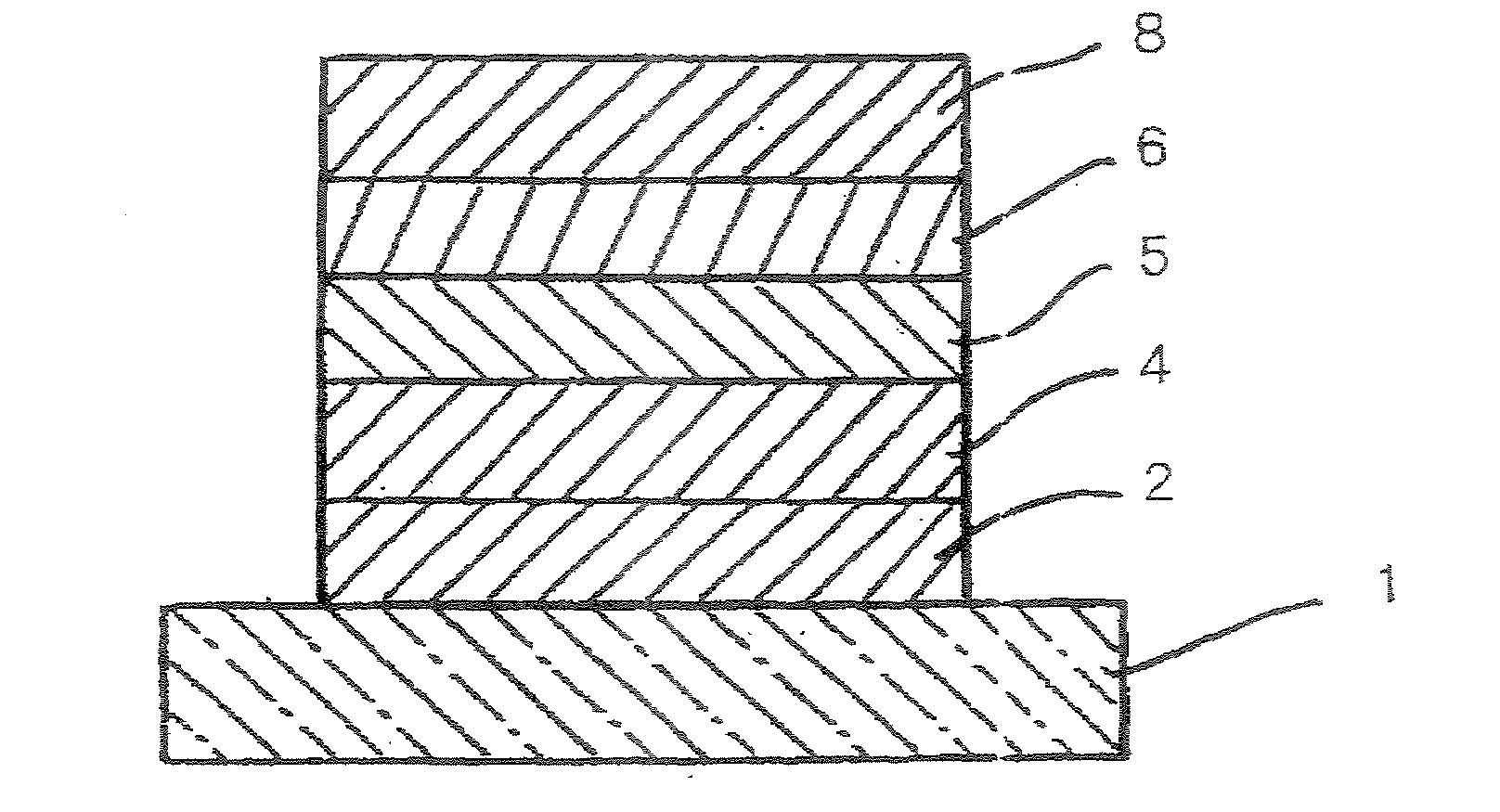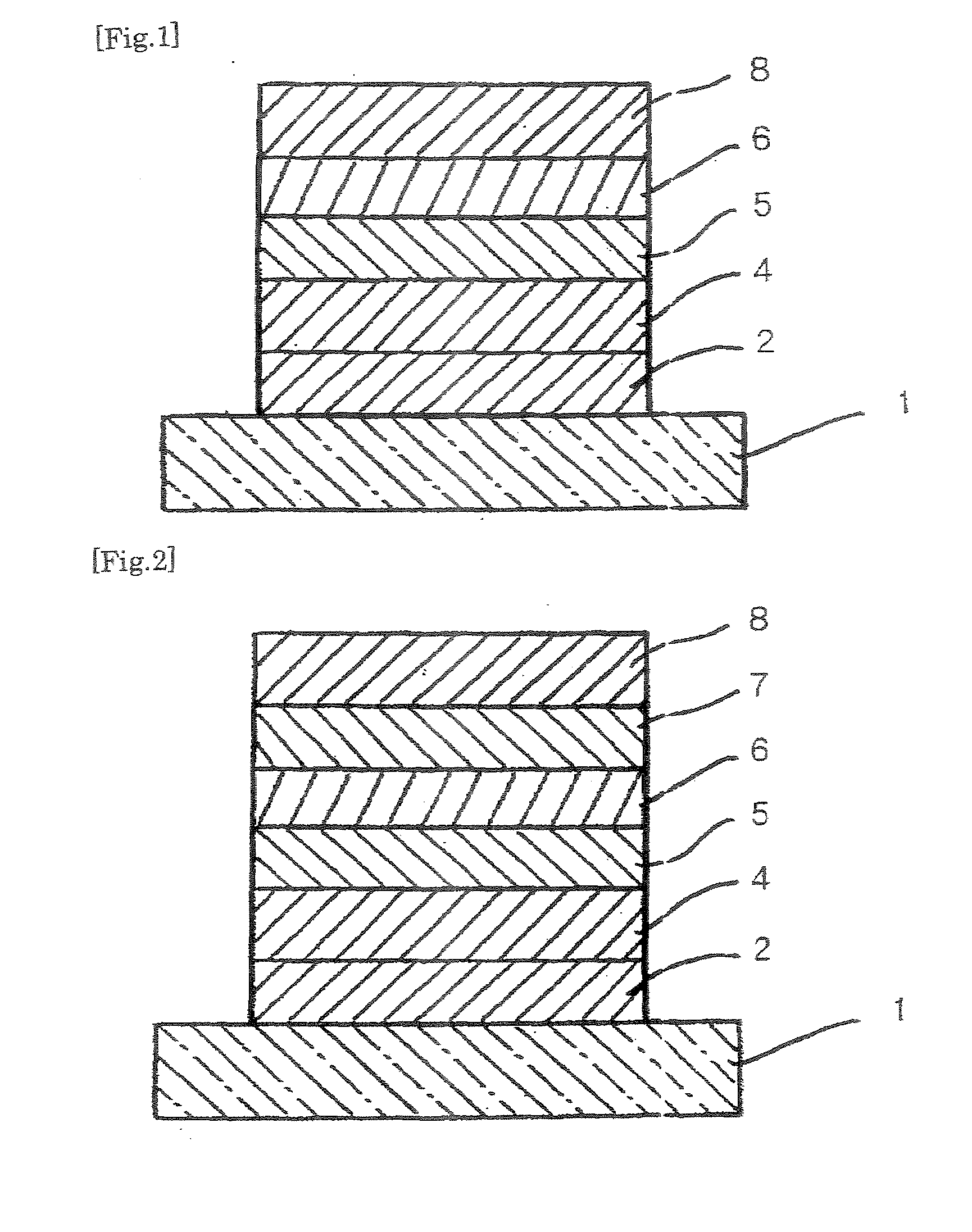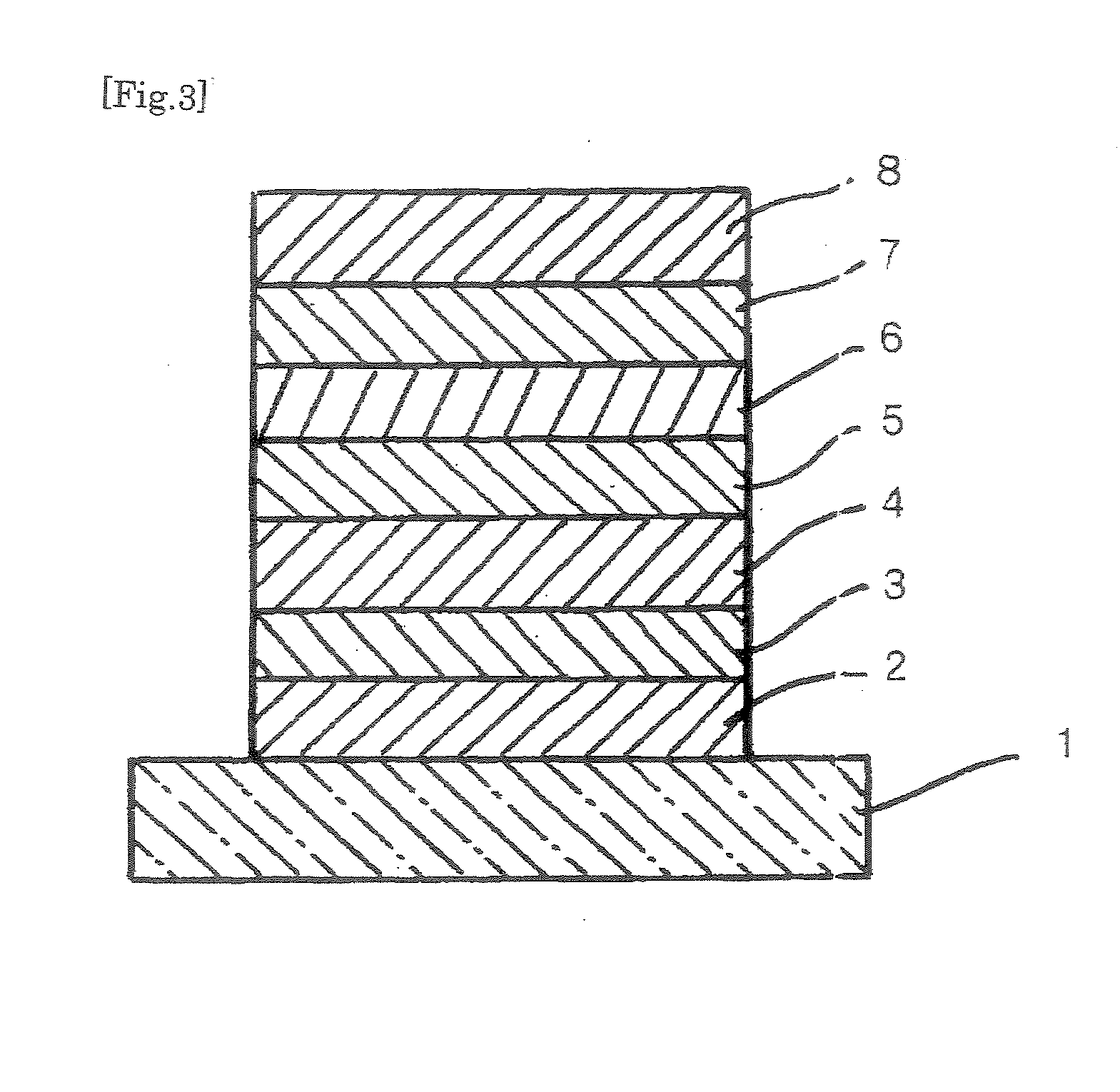Organic compound, charge transport material and organic electroluminescent device
a charge transporting material and organic technology, applied in the field of organic compounds and charge transporting materials, and organic electroluminescent devices, can solve the problems of insufficient luminous efficiency, poor electron transporting ability of devices using biphenyl derivatives, and insufficient luminous efficiency. , to achieve the effect of satisfactory durability, excellent hole transporting ability, and excellent electron transporting ability
- Summary
- Abstract
- Description
- Claims
- Application Information
AI Technical Summary
Benefits of technology
Problems solved by technology
Method used
Image
Examples
synthesis example 1
(i) Synthesis of Target Compound 1
[0259]
[0260]A mixture of carbazole (7.00 g), 3-bromoiodobenzene (14.2 g), copper powder (2.66 g), potassium carbonate (5.79 g), and Tetraglyme (10 ml) was stirred with heating at 140° C. in a nitrogen stream for five hours, followed by standing to cool to room temperature. After the completion of reaction, the reaction mixture was combined with chloroform, and insoluble components were separated by filtration. Chloroform was distilled off from the filtrate under reduced pressure, and the residue was purified by silica gel column chromatography (n-hexane / toluene=4 / 1). By drying under reduced pressure, Target Compound 1 (10.5 g, in a yield of 78%) was obtained as a colorless viscous liquid.
(ii) Synthesis of Target Compound 2
[0261]
[0262]A mixture of Target Compound 1 (10.5 g), bis(pinacolatodiboron) (9.93 g), potassium acetate (10.9 g), and anhydrous dimethyl sulfoxide (DMSO) (190 ml) was stirred with heating at 60° C. in a nitrogen stream for fifteen ...
synthesis example 2
(i) Synthesis of Target Compound 4
[0267]
[0268]A mixture of 6,6′-dibromo-2,2′-bipyridyl (2.00 g), 2,5-difluorophenylboronic acid (2.41 g), potassium carbonate (4.40 g), ethylene glycol dimethyl ether (25 ml), and water (13 ml) was stirred with heating at 60° C. in a nitrogen stream for fifteen minutes and combined with tetrakis(triphenylphosphine)palladium(0) (0.368 g), followed by stirring with heating under reflux for six hours. After standing to cool to room temperature, the reaction mixture was combined with methanol (100 ml), followed by stirring to yield a precipitate. The precipitate was recovered by filtration, washed with a mixture of methanol / water, and dried under reduced pressure to yield crystals. The crystals were dissolved in chloroform (150 ml) to yield a solution, and the solution was combined with activated clay and stirred with heating under reflux for one hour. Insoluble components were separated by filtration, and the filtrate was concentrated to precipitate crys...
synthesis example 3
(i) Synthesis of Target Compound 6
[0273]
[0274]A mixture of 2,5-dibromopyridine (3.00 g), bis(tributyltin) (3.54 ml), and anhydrous xylene (100 ml) was stirred with heating at 60° C. in a nitrogen stream for fifteen minutes, and combined with tetrakis(triphenylphosphine)palladium(0) (0.351 g), followed by stirring with heating under reflux for eight hours. After standing to cool to room temperature, the reaction mixture was combined with chloroform (100 ml) and stirred, from which insoluble components were separated by filtration. Xylene and chloroform was distilled off from the filtrate under reduced pressure. The residue was purified by silica gel column chromatography (methylene chloride / hexane=1 / 5 to 1 / 1), washed with methanol, dried under reduced pressure, and thereby yielded Target Compound 6 (0.51 g, in a yield of 25%) as white crystals.
(ii) Synthesis of Target Compound 7
[0275]
[0276]A mixture of Target Compound 6 (0.48 g), carbazole (1.02 g), copper powder (0.29 g), potassium ...
PUM
| Property | Measurement | Unit |
|---|---|---|
| glass transition temperature | aaaaa | aaaaa |
| glass transition temperature | aaaaa | aaaaa |
| glass transition temperature | aaaaa | aaaaa |
Abstract
Description
Claims
Application Information
 Login to View More
Login to View More - R&D
- Intellectual Property
- Life Sciences
- Materials
- Tech Scout
- Unparalleled Data Quality
- Higher Quality Content
- 60% Fewer Hallucinations
Browse by: Latest US Patents, China's latest patents, Technical Efficacy Thesaurus, Application Domain, Technology Topic, Popular Technical Reports.
© 2025 PatSnap. All rights reserved.Legal|Privacy policy|Modern Slavery Act Transparency Statement|Sitemap|About US| Contact US: help@patsnap.com



